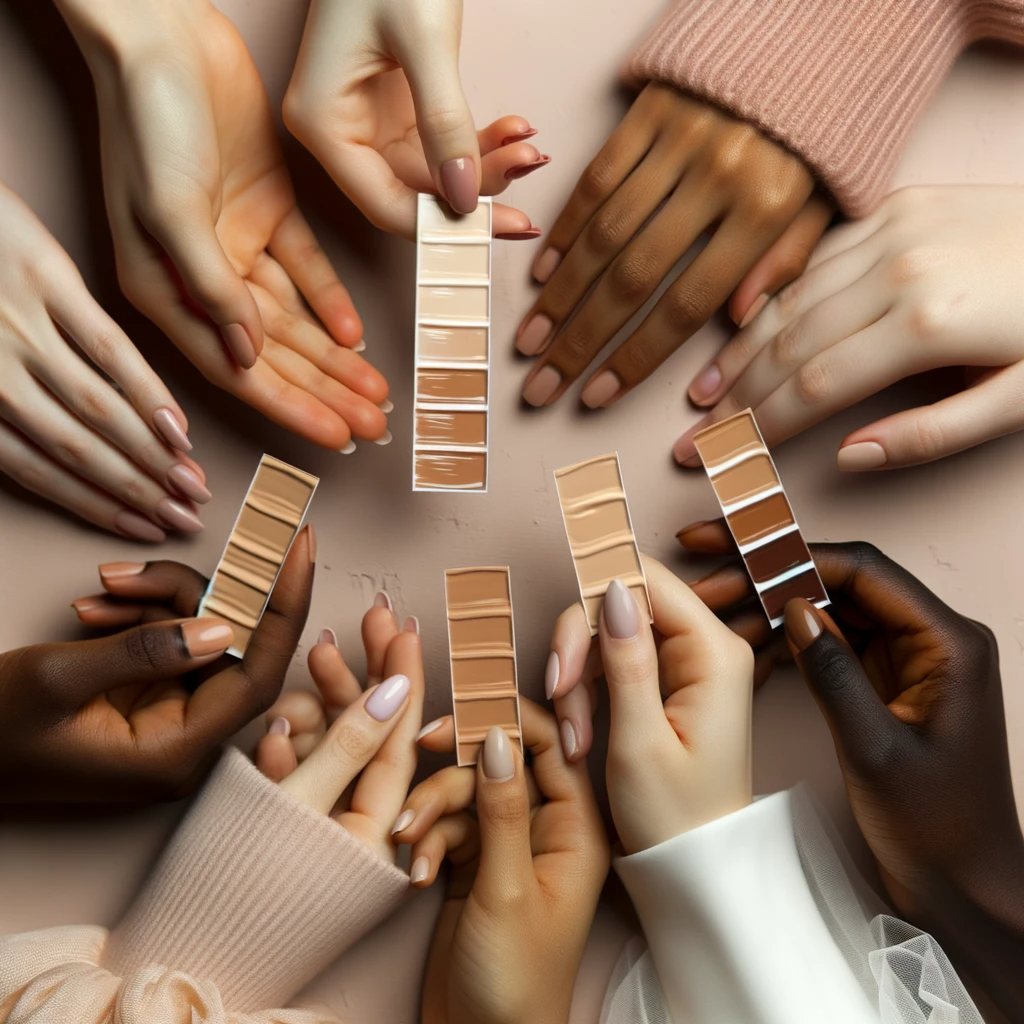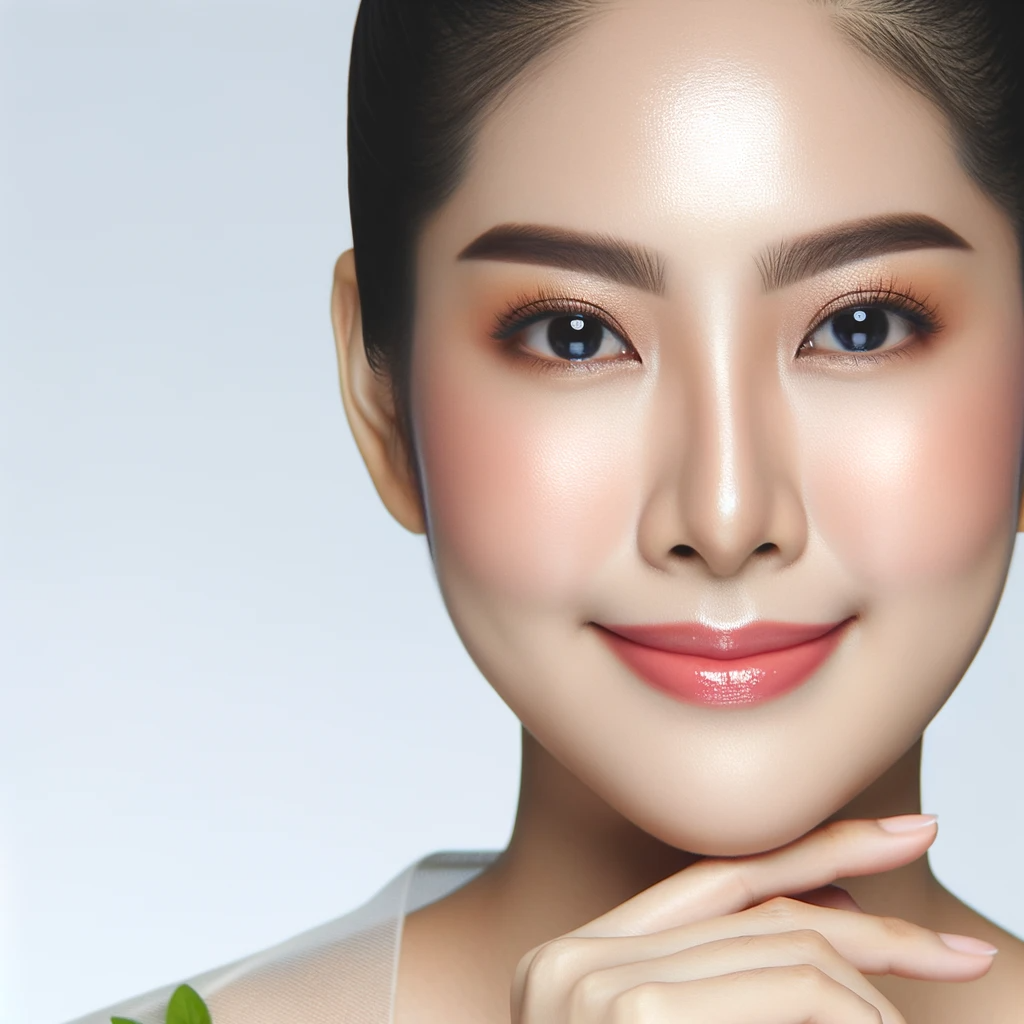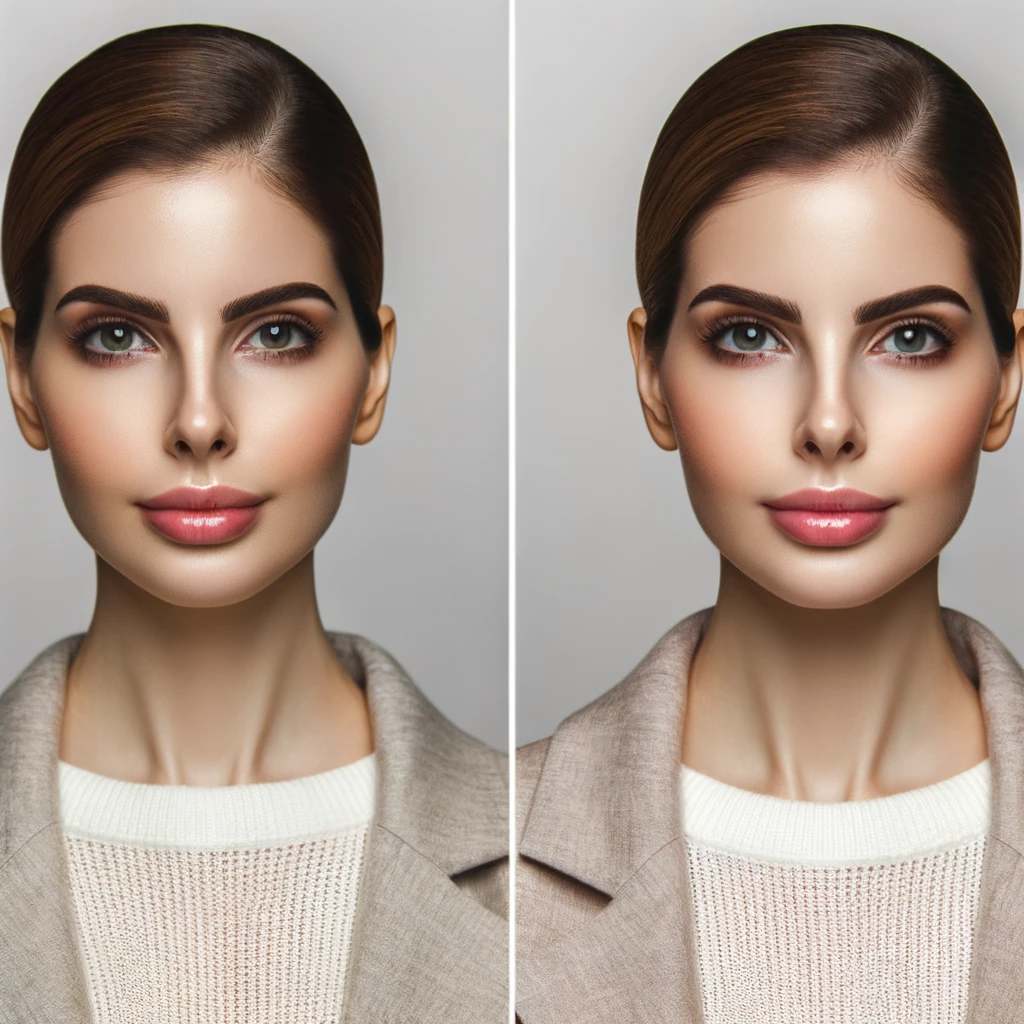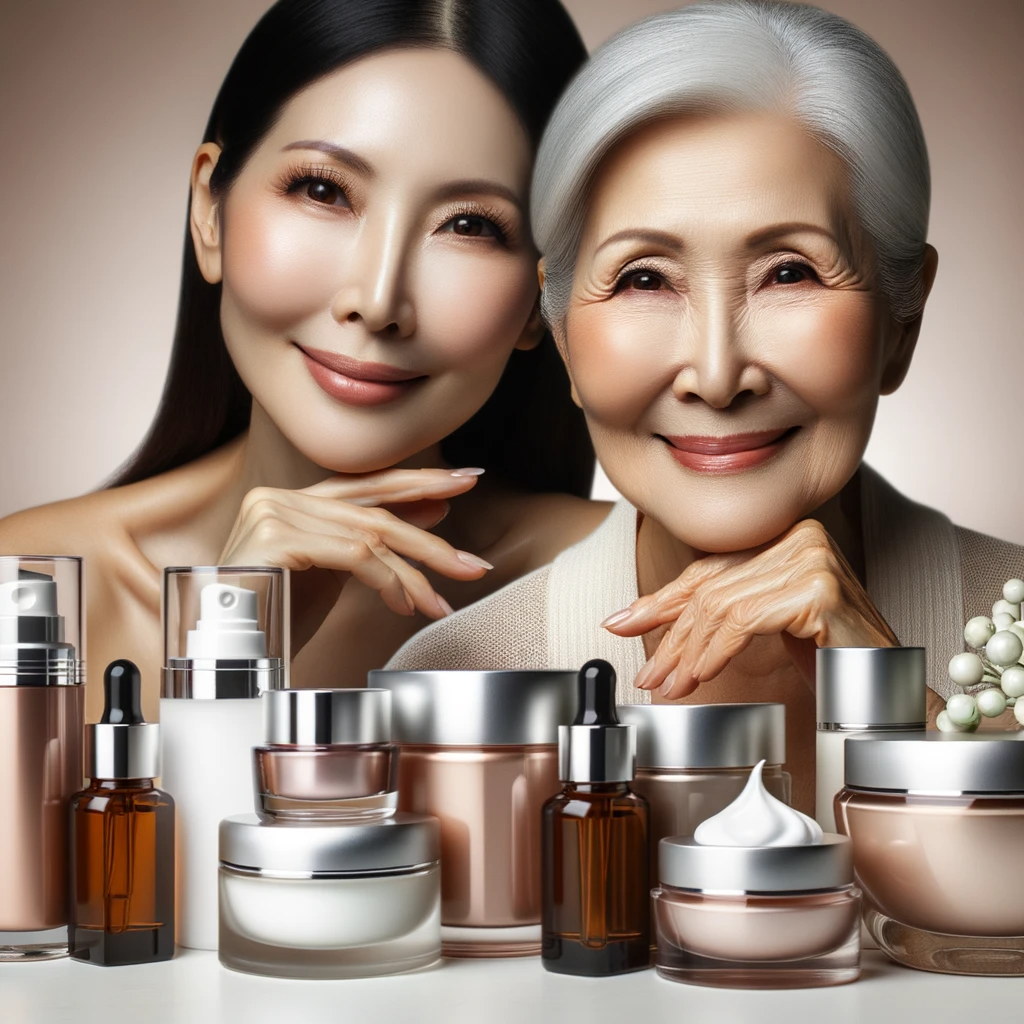Introduction
Understanding the importance of matching skin tone accurately.
In the world of beauty and cosmetics, one’s skin tone is the canvas upon which all other colors are layered. A foundation that’s off by even a shade can disrupt the harmony of one’s look, making everything appear out of sync. Finding the right match isn’t just about aesthetics; it’s about feeling authentic and confident in one’s skin.
The science behind skin tones and undertones.
Every person’s skin tone is unique due to the mix of melanin, hemoglobin, and carotene present. But beyond the surface color, there’s an underlying hue known as the undertone. While the surface color can change due to factors like sun exposure, the undertone remains constant. Understanding the intricacies of skin science helps in achieving a more precise shade match.
The Spectrum of Skin Tones
Basics of Skin Tones
Primary categories: Fair, light, medium, tan, dark, and deep.
Fair: Often burns easily in the sun. Veins might appear bluish through the skin.
Light: Might tan gradually but can burn if not cautious. Veins appear slightly green or blue.
Medium: Typically tans without burning. Veins have a mix of blue and green appearance.
Tan: Has a naturally warmer complexion. Rarely burns and tans easily.
Dark: Rich in melanin, rarely ever burns. Veins might not be as visible, but when they are, they appear warmer or deeper in color.
Deep: High melanin content with a cool or warm undertone. The richness of the skin color stands out with distinct undertones.
Brief description of each. Skin tones are diverse, and the aforementioned categories only scratch the surface of the plethora of shades in the human palette. Within each primary category, there are several sub-shades, each beautiful and unique. These primary categories provide a starting point for individuals to narrow down their search for the perfect match.
Identifying Undertones: Warm, Cool, and Neutral
The role of undertones in determining the perfect shade.
Undertones are the subtle colors underneath the surface of the skin. They play a pivotal role in determining which shades of makeup will harmonize with one’s natural skin color. For instance, two people might have the same surface skin color but different undertones, meaning they’d need different foundation shades.
Quick tests to determine your undertone.
The Vein Test: Check the veins on the underside of your wrist. If they appear blue or purple, you likely have cool undertones. If they appear greenish, you have warm undertones. If it’s hard to tell, you might be neutral.
The Jewelry Test: Think about whether you look better in silver or gold jewelry. Silver typically complements cool undertones, while gold highlights warm undertones.
The White vs. Off-White Test: Hold up a pure white and off-white cloth to your face. If pure white makes you look fresh and lively, you have cool undertones. If off-white does the trick, you’re leaning towards warm.
Common Mistakes in Shade Matching
Relying Solely on Surface Color
The danger of overlooking undertones. While the surface color of one’s skin gives a basic indication of the shade range they might fall into, it doesn’t provide the full picture. The undertone, or the subtle hue beneath the skin, plays a pivotal role in determining the most harmonious shade. Relying solely on surface color often leads to foundation choices that might seem too ashy, too yellow, or just off in natural light.
Real-life examples of mismatched shades.
The Golden Hour Fail: Sarah thought she found her perfect foundation at the store. But during the golden hour, her face looked noticeably pinker than her neck, revealing a mismatched undertone.
The Flashback Photo: David’s foundation looked seamless indoors. However, in photos with flash, his face appeared ghostly compared to the rest of his body.
H3: Ignoring Skin Type
Why oily, dry, and combination skins might appear differently. The nature of one’s skin – be it oily, dry, or combination – influences how foundation adheres and appears. Oily skin might break down foundation faster, leading to oxidation and a darker appearance. Dry skin may cause the foundation to cling to patches, making the color appear uneven.
Recommendations for each skin type.
Oily Skin: Opt for mattifying, long-wear foundations that resist oxidation. Primers can also help in prolonging wear.
Dry Skin: Hydrating foundations with a luminous finish can give a natural glow. Ensure regular exfoliation and moisturizing for the best results.
Combination Skin: Consider using different products or techniques for different areas of the face, like matte products on the T-zone and hydrating ones on drier areas.
Tips for Finding Your True Shade
H3: Professional Consultation
Benefits of seeking expert advice. Beauty professionals have been trained to discern nuances in skin tone and can provide personalized recommendations. Their expertise ensures a higher likelihood of finding a perfect match in fewer trials.
Places to get a professional shade matching.
Beauty counters at department stores often offer shade matching services.
Specialty beauty stores, where staff are trained in multiple brands and products.
Some dermatologists and beauty salons also offer color matching as part of their consultation.
Using Technology for Shade Matching
Modern tools and apps that assist in finding the perfect match.
Brands and tech firms have developed apps and in-store devices that scan the skin to recommend the closest foundation shade. These tools consider factors like lighting, skin texture, and undertones.
Pros and cons of technological solutions.
Pros: Quick results, can analyze skin in different lighting, often free or part of a purchase.
Cons: May not account for personal preferences in finish and coverage, technology glitches can sometimes give incorrect matches, relies on the accuracy and range of the brand’s shade offerings.
Sampling Before Committing
The importance of testing products in various lighting. Store lighting can be deceiving. It’s crucial to test foundation shades in natural daylight, under white light, and even with flash photography to ensure the shade looks consistent and natural in all settings.
Tips for effective sampling.
Swatch on the Jawline: This helps compare the shade against the face and neck for a seamless match.
Wait for It to Settle: Foundation can oxidize and change color after a few minutes. Allow it to settle before making a decision.
Test for Longevity: If possible, wear the sample for a few hours to see how it withstands daily activities and meshes with your skin’s natural oils.
Inclusive Brands Leading the Way
Brands that offer a wide shade range.
In the modern beauty industry, several brands have taken commendable steps to cater to a broad spectrum of skin tones. These brands recognize that beauty is diverse, and one size doesn’t fit all. Brands such as Fenty Beauty, NARS, and Anastasia Beverly Hills, to name a few, have pioneered this movement, offering foundations that cater to the fairest to the deepest skin tones, ensuring everyone has a shade that feels uniquely theirs.
Why inclusivity in beauty is crucial.
Inclusivity is more than just a trend; it’s a recognition of diverse beauty. For too long, many individuals have felt sidelined by the beauty industry, with limited or no options matching their skin tones. Inclusive beauty champions the idea that every person, regardless of their skin color, has the right to feel beautiful and represented. It breaks down barriers, fosters self-confidence, and promotes a more holistic understanding of beauty.
Conclusion
Embracing and celebrating individual skin tones.
In the vast spectrum of human skin tones, every shade tells a unique story. Embracing and celebrating these differences is essential for fostering a culture of acceptance and appreciation. By seeking out and supporting brands that understand and cater to this diversity, consumers send a powerful message about the kind of world they want to see – one where every skin tone is celebrated.
The journey to find the perfect match is a personal one.
While guidelines, tools, and expert advice can pave the way, the quest for the perfect shade is deeply personal. It’s intertwined with one’s identity, experiences, and understanding of self-beauty. With patience and persistence, this journey can lead to more than just the right foundation shade; it can lead to a deeper appreciation of one’s unique beauty and a more confident expression of self in the world.
- What is “Reveal Your True Shade” all about?
- This is a comprehensive guide aimed at helping individuals identify their unique skin tone and find makeup shades and skincare products that perfectly complement it.
- How do I determine my skin’s undertone?
- Skin undertones can be categorized as cool, warm, or neutral. To determine yours, look at the veins on your wrist. If they appear blue or purple, you have a cool undertone. If they seem green, you have a warm undertone. If it’s challenging to tell, you likely have a neutral undertone.
- Why is understanding my skin tone important?
- Knowing your skin tone helps you select makeup shades that will enhance your natural beauty, rather than clash with it. It also helps in choosing skincare products that address specific concerns related to your skin tone.
- Can my skin tone change over time?
- Yes, factors like sun exposure, aging, and hormonal changes can influence your skin tone. However, while the surface color might change, your undertone generally remains consistent.
- What are the general skin tone categories?
- The basic categories include fair, light, medium, tan, dark, and deep. Within these categories, there can be several variations based on undertones.
- How can I find makeup that matches my skin tone?
- Many makeup brands now offer shade matching tools, both online and in-store. It’s always a good idea to test a product on your jawline in natural light before purchasing.
- Why does my foundation look different in store lighting vs. natural daylight?
- Artificial lighting can alter the appearance of makeup shades. It’s best to check any foundation or concealer in natural daylight to get an accurate view of its compatibility with your skin.
- Does skin type affect which products I should use?
- Yes, beyond skin tone, your skin type (oily, dry, combination, sensitive) plays a crucial role in determining which makeup and skincare products are suitable for you.
- Are there specific lipstick shades best suited for different skin tones?
- Generally, cool undertones look great with blue-based reds or soft mauves. Warm undertones pair well with orange-based reds or warm peachy nudes. Neutrals can usually rock a broader spectrum of shades.
- I have a deeper skin tone and struggle with hyperpigmentation. Are there particular products recommended?
- Absolutely. Look for foundations and concealers with high pigment concentrations to achieve full coverage. Also, incorporate skincare products with ingredients like niacinamide or vitamin C to address hyperpigmentation over time.
- What if I can’t find a perfect match, even with all the available shades?
- Mixing foundations is a common practice. If you’re between shades, don’t hesitate to mix two products to get your ideal match.
- How do seasons affect my skin tone and product choice?
- Your skin may become lighter or darker depending on sun exposure and the season. It’s not uncommon to have a summer and winter foundation shade.





